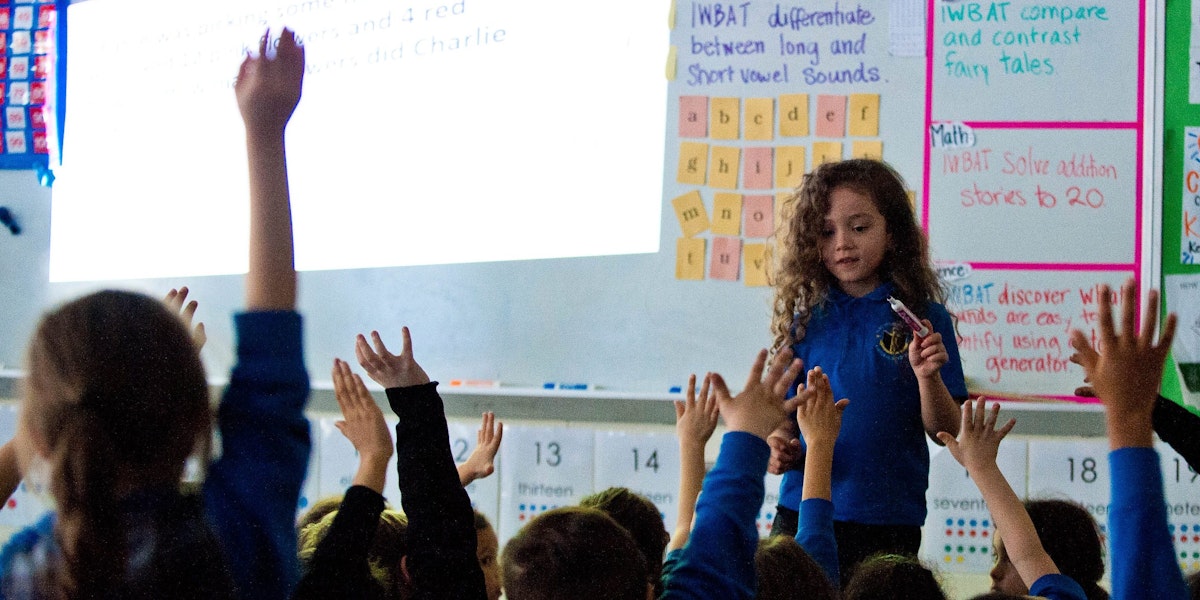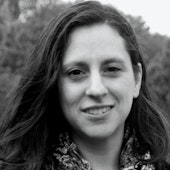Kiana Cardenas began attending Rhode Island’s Blackstone Valley Prep as a freshman after her mother, Monica Goncalves, entered her name in the charter school’s lottery without telling her. Her mom was drawn to the high expectations of the intentionally diverse charter network in Rhode Island, where students come from two predominantly lower-income cities, Central Falls and Pawtucket, and two more affluent suburban towns, Cumberland and Lincoln. Goncalves had also wanted to avoid sending her daughter to Pawtucket’s Tolman High School, the school she herself attended before dropping out when she became pregnant with Kiana at age sixteen.
Kiana initially felt unprepared for Blackstone Valley Prep (BVP)’s rigor. But she soon learned that her new peers were her greatest resource and support system.
“You never know what you’re capable of,” says Kiana. “I didn’t think I could do AP courses. And if I had gone to Tolman, I don’t think I’d have taken AP classes. But here, everyone was like, ‘Just do it. It’ll be fun. We can help each other out.’”1
Overview of Blackstone Valley Prep
Blackstone Valley Prep, a K–12 charter school network, admits students from across four racially and socioeconomically diverse communities in the northeast corner of Rhode Island. The network integrates students within classrooms, regardless of performance level. Its culturally responsive curriculum aims to reflect and incorporate the range of experiences and backgrounds of its students. The network prides itself on being among the state’s highest performers when it comes to standardized test scores, and its low-income students outperform their peers from the four Blackstone Valley communities.2
“Our intentional diversity is our greatest asset,” says Jeremy Chiappetta, BVP’s founding principal, who is now the network’s executive director. “It’s our greatest opportunity. It’s our greatest challenge.”
BVP keeps a laser focus on college as the goal, from kindergarten through senior year; every classroom is named after a different university. Unlike most other high-performing charter networks, BVP has an added dimension of being “diverse-by-design.” The network fosters an environment in which students from disparate backgrounds learn with and from each other in classes that are not tracked. All students wear uniforms—which can be donated, discounted, and aligned to a student’s gender identity—as an equalizing strategy. Through the network’s culturally responsive curriculum, students are exposed to texts representing a variety of viewpoints and are encouraged to discuss people’s differences. Through professional development, teachers are taught to become aware of their own biases and structural inequities and to elevate student voices over their own. Yet, while the network has found meaningful ways to bring its students together, it still struggles in bridging the parent divide, and some of its suburban families are leaving to go to other middle and high schools.
“Our intentional diversity is our greatest asset,” says Jeremy Chiappetta, BVP’s founding principal, who is now the network’s executive director. “It’s our greatest opportunity. It’s our greatest challenge.”
Diverse Charter Schools
Read more about diverse charters schools from The Century Foundation below.Anti-CRT Movement Seeks a Future in Charter Schools
Strategies for Fostering Intergroup Contact in Diverse Schools
Strategies for Promoting Integrated Classrooms within a School
Strategies for Creating and Sustaining School Diversity
Albuquerque Sign Language Academy
How Can the Federal Government Support Integration in Charter Schools?
Scoring States on Charter School Integration
Advancing Intentional Equity in Charter Schools
Fostering Intergroup Contact in Diverse Schools
Integrating Classrooms and Reducing Academic Tracking
History and Demographics of the School
Blackstone Valley Prep opened in 2009 with seventy-six kindergarteners, and has since grown to 1,800 students across three elementary schools, two middle schools, and one high school. The network’s charter allows it to grow to nearly 2,400 students.
BVP was Rhode Island’s first “mayoral academy,” a special type of regional charter school written into state law in 2008 and overseen by a board of mayors representing the communities where its students live. The new charter structure was part of the state’s strategy in its successful Race to the Top application.
Daniel McKee, then-mayor of Cumberland, one of the more affluent of the four communities, led the effort to create the new model after being tapped by the Rhode Island Foundation to look at a regional approach. He drew inspiration from his experience working with youth from across the region as a basketball coach. His teams often “looked like a United Nations,” he says, with players hailing from diverse socioeconomic and racial backgrounds. Due to this diversity, he says, there was initially conflict and mistrust; over time, however, the players developed a real support system.
Besides its diversity, the network’s vision included high levels of autonomy—bypassing laws requiring teacher compensation, hiring, and unionization. It was not an easy sell to many locals and state legislators. “We have jumped over more hurdles than anyone,” says McKee, who is now Rhode Island’s lieutenant governor.
Many locals frowned upon the non-unionized staff and believed that charter schools took money from traditional public schools. Because of the political ramifications of supporting the network, many local politicians eschewed involvement. Today, McKee says, the network is still fighting an uphill battle in this regard. This trickles down to BVP students and families, he says, who are sometimes intimidated on soccer fields by other families who accuse them of “stealing” from their own kids.
Enrolling a Diverse Student Body
Blackstone Valley Prep’s model intentionally draws its district borders to integrate its schools. Though the network’s boundaries span only an area of about ten miles by four miles in the state’s northeast corner, its four communities—Lincoln, Cumberland, Central Falls, and Pawtucket—are economically stratified. Central Falls, for instance, is predominantly Latinx and low-income; residents’ median household income is $28,9003 and median home value is $164,000.4 Lincoln, on the other hand, is predominantly white; its median household income is $65,6005 and the median home value was roughly $304,000.
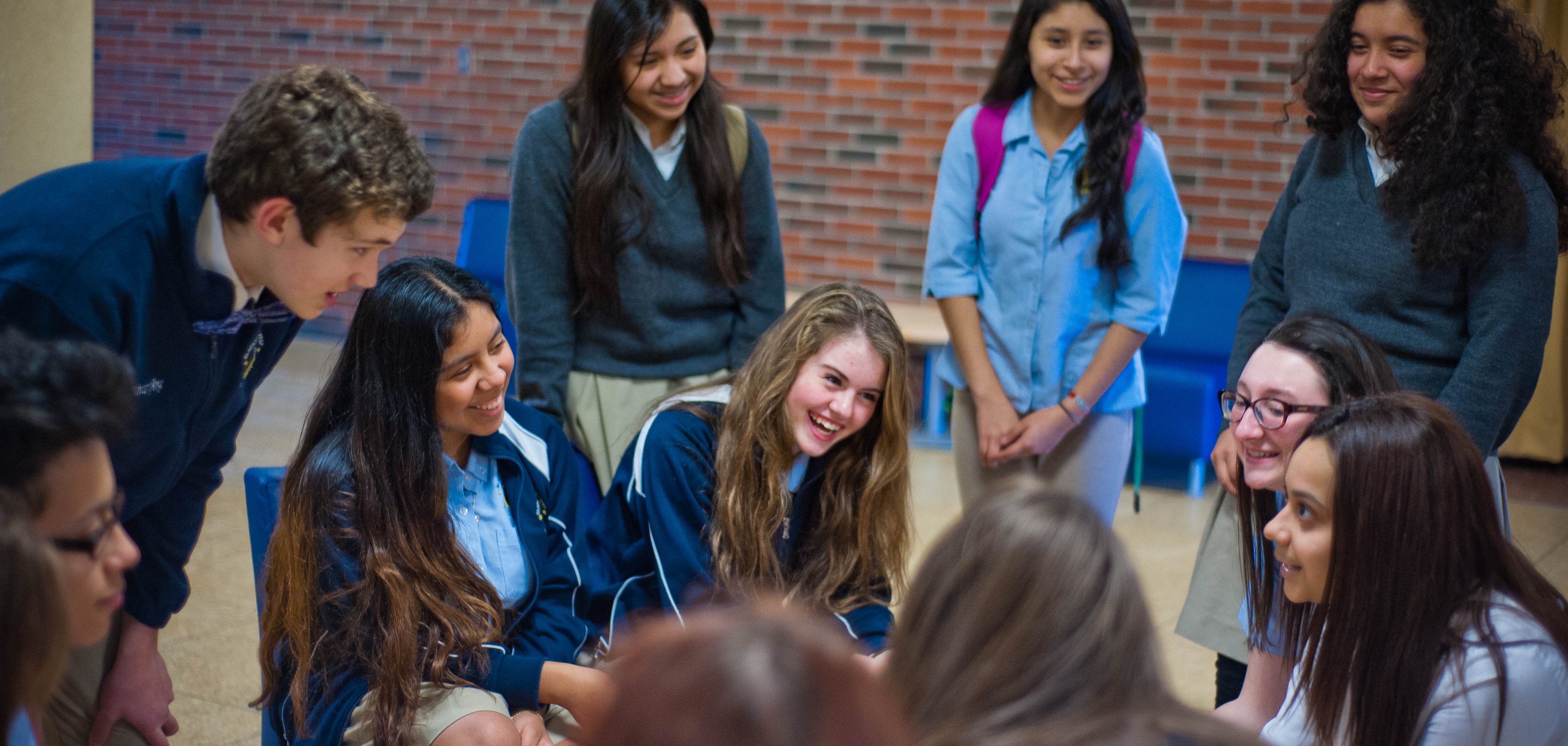
Chiappetta was, at first, wary about working with more affluent students from the suburban towns after spending his educational career up to that point focused solely on low-income students in high-poverty areas in New York City and Providence. But a mentor, who was a superintendent of Central Falls, convinced him of the importance of integrated schools.
“She says, ‘The most powerful thing you can do for my kids in Central Falls is put them in a seat next to a kid from Cumberland and Lincoln, and the most powerful thing you can do for a kid in Lincoln or Cumberland is to put them in a seat next to a kid from Central Falls,’” Chiappetta recounts.
Many parents in Cumberland and Lincoln, however, do not necessarily agree, and the network’s student body, at this point, is predominantly low-income.
Blackstone Valley Prep’s Unique Approach: Prioritizing Diversity in Recruitment and Enrollment
BVP’s enrollment lottery is designed to ensure both that its four sending districts are represented proportionally—thus ensuring racial diversity—as well as that a significant portion of students come from lower-income families. Half of the students across the network are Latinx, 36 percent are white, and 11 percent are black. BVP aims to give at least 50 percent of available seats to students that qualify for free or reduced-price lunch6 (the network presently exceeds that, with nearly 68 percent of the network’s students qualifying for free or reduced lunch). Though the network’s student body has increasingly tilted low-income, school officials have not discussed weighting the application process to favor middle-class students, according to Vanessa Douyon, the BVP’s director of strategy.
“Never say never, but I don’t see this in our future, as of now,” says Douyon. “Given the state of our education system—where student opportunities and performance correlate highly with income—I think that many of our teachers and staff are particularly motivated to ensure that kids who may not otherwise have access to a great education are served at BVP.”
The model, however, is predicated on having a mix of students with a range of needs.
Guidance counselors and other support staff can often offer more assistance to those with higher needs when they are not exclusively serving high-needs students, believes Jonathon Acosta, a former middle school math teacher and dean of culture at BVP, who now serves on Central Falls’ city council and is a PhD candidate in sociology at Brown.
“In a place like Central Falls High, there are so many undocumented students and kids living in poverty, it becomes status quo and there’s less urgency,” says Acosta. “When you concentrate need, it becomes harder to address it.”
Recruitment Strategies
BVP received more than 2,010 applications for 292 seats in the 2017–18 school year.7
When it comes to recruitment efforts, the network tries to ensure equity, so that families of all backgrounds can find out about the schools. At the same, the network wants to avoid having too people many apply, which would dramatically decrease the likelihood of being selected, explains Douyon.
For outreach, the network ensures that its website is updated, sends out reminders and announcements through social media, and hosts several elementary and high-school open houses. BVP also takes out ads in local newspapers and provides current families with info cards to give their family and friends.
The Role of Geography in a Regional Network
Demand for BVP is not equal across the four different communities that it serves, despite the goal of each contributing a quarter of the student body.8
Nearly 40 percent of the network’s students come from Pawtucket, which has the state’s third highest population of low-income students and is the only district that has none of the network’s schools within its boundaries. Nearly 28 percent of students come from Central Falls, which only recently emerged from municipal bankruptcy and is home to one BVP middle school. Roughly 22.5 percent come from Cumberland, where two of the network’s elementary schools and its high school are located. Lastly, about 11 percent of students are from Lincoln, home to a co-located elementary and middle school. That elementary school is planning to relocate to the north part of Cumberland, which may make it more convenient to some Cumberland and Lincoln families, but farther from Pawtucket and Central Falls.
As it stands, BVP spends more money in Lincoln trying to recruit students than it does in the other districts, and while the network strives to site its schools intentionally, the location often ends up being dictated by building or land availability and price, school officials noted. Free bussing is provided to all students, who can be picked up and dropped off at central locations.
Though BVP “doesn’t want students’ ZIP codes to define them,” according to Chiappetta, the network has learned that the locations of its schools’ ZIP codes sometimes do define parent perceptions of the network.
When Blackstone Valley Prep opened its first middle school—after a $5-million renovation of a former Catholic school in Central Falls roughly 700 yards from the town line—the school began losing some of its suburban families.
The school lacks a gymnasium and ballfields, so it uses a public park with fields four blocks away that the Catholic school had used.
The school lacks a gymnasium and ballfields, so it uses a public park with fields four blocks away that the Catholic school had used. This concerned some suburban parents, including one who went to the local precinct to get data on crimes near the fields and photographed the park’s litter and the inside of its portable toilet to raise concerns about safety and cleanliness, Chiappetta says.
But Chiappetta remains concerned about larger issues at play involving implicit bias that exists across society. “When kids are in third grade all playing violin together, it’s a beautiful photo. It’s very different than when two kids from different backgrounds are starting to date,” he says. When kids start to experiment with drugs and alcohol, that experimentation happens across different demographics, but families from the more affluent towns make assumptions about dangers from the lower-income communities, Chiappetta believes. Meanwhile, he pointed out, Lincoln and Cumberland received federal grant money because of their high incidence of drug use.9
BVP’s kindergarten class in the 2016–17 school year was comprised of 36 percent white students and 43 percent Latinx students, while its eleventh-grade class, its uppermost grade at the time of data collection, was comprised of 27 percent white students and 53 percent Latinx students.10
The fact that the high school has no track record also made suburban families, who had other options for high performing schools, more hesitant, several staffers noted. They hope the high school’s new 40,000-square-foot building, with its “maker space,” “innovation lab,” gym and ballfields, will help stop the loss.
There are other aspects of the network that may turn off more affluent families. There’s less time for extracurriculars because of a longer school day and heavy homework load11—both of which were scaled back this year. (Some staffers said the day was shortened to retain teachers, but others said that the move along with the new homework policy, was to retain suburban families.) The network’s rejection of tracked classes and its inclusion of students with special needs, who may have significant behavioral issues, may also be a factor.
“There are elements of suburban parent desire that we are not currently catering to: We are not segregating classes,” says Chiappetta. “No one is saying to us, we should segregate by race, but they do regularly say, ‘I want an honors track or a pre-AP track,’ and we don’t offer that.”
Improving Academic Outcomes
Across the network, BVP students outperformed the state averages on assessments in both math and English-language arts. BVP’s low-income students, students with disabilities, Latinx, and other subgroups also outperformed their counterparts in the network’s four sending districts.12
The school feels a particular sense of urgency when it comes to narrowing academic achievement gaps between whites and Latinx, since the state’s Latinx–white achievement gap is among the largest in the nation.
The school feels a particular sense of urgency when it comes to narrowing academic achievement gaps between whites and Latinx, since the state’s Latinx–white achievement gap is among the largest in the nation, and its Latinx scored last on a nationwide index measuring factors that contribute to a child’s success as an adult.13
Encouragingly, state test scores for BVP’s Latinx students outperformed Latinx attending schools across the four communities from which BVP draws its student body. Roughly 45 percent of BVP’s Latinx students passed the ELA exam, compared to 34 percent of Latinx in Lincoln, 31 percent in Cumberland, 25 percent in Pawtucket, and 11 percent in Central Falls.14 On the math exams, 38 percent of BVP’s Latinx students passed compared to 31 percent in Cumberland, 22 percent in Lincoln, 20 percent in Pawtucket, and 11 percent in Central Falls.15
Also, though a large gap remains between Latinx and white students at BVP, the spread was narrower among students in the network than it is statewide. The gap was 18 percentage points at BVP in both math and English while statewide, the gap was 27 and 23 points, respectively. The gap between black and white students at BVP was much narrower on ELA state tests, with a 13-percentage-point difference compared to a 27-point difference statewide. The gap on math, however, was not dramatically different: scores for black and white students were 22 percentage points apart, while statewide the gap was 24 points.16
While BVP students may outperform their district peers, the test scores are still not stellar. The network is trying to address this by using data in real time to help the staff figure out where to devote its resources, explains Stephanie Primiani, BVP’s director of STEM education. For example, in response to the data, one elementary school is piloting “content specialists” for math in third grade. It allows those teachers to dig deeper into math since they are only teaching that subject, Primiani says, but it also means having more children with which to build relationships.
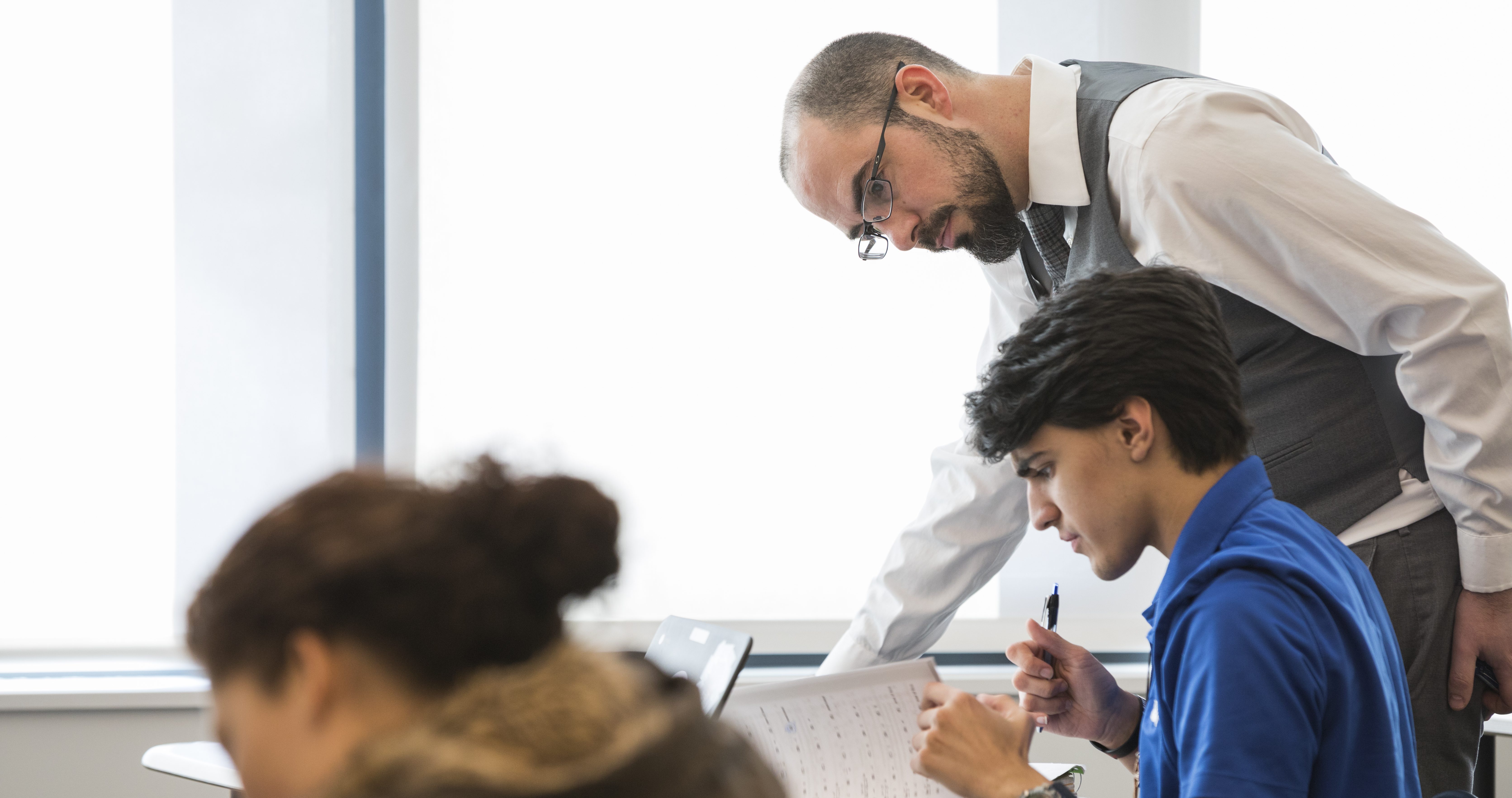
Tools to Keep Classes Integrated: Co-Teaching and Differentiation
BVP students in kindergarten through eighth grade are not tracked. To support differentiation within the classroom, most of the network’s K–8 classrooms are co-taught by a pair of teachers17 (either a special education teacher and general education teacher or two general education teachers). The schools employ different co-teaching models, including parallel teaching, “station” teaching, or having one lead teacher with an assistant.
Kourtny DaRocha, a second-grade teacher at a BVP elementary school, says she and her co-teacher “divide and conquer,” with DaRocha working with the struggling students, including those with disabilities or who are English Language Learners. Her co-teacher focuses more on the higher-achieving students. Both teachers then divvy up those falling in the middle.
“By doing that we are able to reach them and work with them in a pretty individualized way,” DaRocha says. “You can’t make twenty-eight different lessons for twenty-eight different kids. We plan for the strongest 5 percent and from there scaffold down.”
BVP takes its inclusion model seriously, striving to go even further than federal requirements of placing students with disabilities in the least restrictive environment possible, noted Primiani. The school has created a Transitional Learning Center, providing a small classroom setting for students who struggle with social, emotional, and behavioral issues. Even students in this program spend some time in larger classes with students with disabilities and general education students, with the goal of eventually moving into integrated classrooms.
Challenges with an Inclusion Model
While research suggests that differentiation while using one curriculum can reduce the achievement gap without negatively affecting the highest performers, the approach remains contentious.18 The school’s inclusion model has caused some friction among some parents of general education students who want their children in classes separate from those students with disabilities, Chiappetta says.
“Within the inclusion model, we are seeing greater levels of trauma-induced behavior. That’s disruptive and challenging and takes away from the learning environment for all kids,” Chiappetta acknowledged.
The school’s inclusion model has caused some friction among some parents of general education students who want their children in classes separate from those students with disabilities.
Behavioral issues may be magnified in having such large classes that have students with a broad range of needs, even with two teachers.
The co-teaching model is financially feasible because BVP has large classes, with roughly twenty-six or twenty-eight students, compared to the twenty to twenty-four students in most schools in the districts of BVP’s four communities, he explained.
But Acosta, who taught middle-school math at BVP, would have preferred if he and his co-teacher had their own classes of fourteen students, like elite private schools.
“If you had fourteen kids, maximum, to a room, you would kill it,” says Acosta.
Focus on Personalized Learning in High School
With a grant from the Next Generation Learning Challenges—funded by the Bill and Melinda Gates Foundation and the William and Flora Hewlett Foundations—BVP’s high school incorporates a blended learning model. Students spend much of their classroom time in group discussions and project-based learning, while they have access outside the class to lectures and online content using the ChromeBook each student is given.19 The network partnered with California’s Summit Public Schools on a Personalized Learning Platform created with the help of developers from Facebook. The platform allows students to chart their progress on coursework and provide ways for teachers to see where students are getting stuck or having success. Many education experts are hopeful that giving more autonomy to students and tailoring the curriculum to their individual needs could help narrow the achievement gap.20
Cesar Urzua, a BVP junior from Central Falls, believes the program is helping him learn the time management skills he’ll need for college. Unlike his friends who go to public schools in Central Falls, where homework assignments tend to be doled out with specific numbers of pages needing to be read and questions to be answered by the next day, at BVP, students are given assignments, as in a college course, at the beginning of the semester with due dates even weeks away.
“Every student has an opportunity to learn at their own pace and how they prefer,” he says, noting how students keep track of their assignments, completed on their own timelines, through the tech platform.
The approach has faced withering criticism over its results and implications for teaching. Many educators and advocates have raised concerns about Silicon Valley’s reach over public schools and about the implications for such programs as massive data collectors.21
While Chiappetta is excited about personalized learning, he is also concerned about potential unintended consequences for some students who are truly working alone, at their own pace, and feeling isolated as a result.
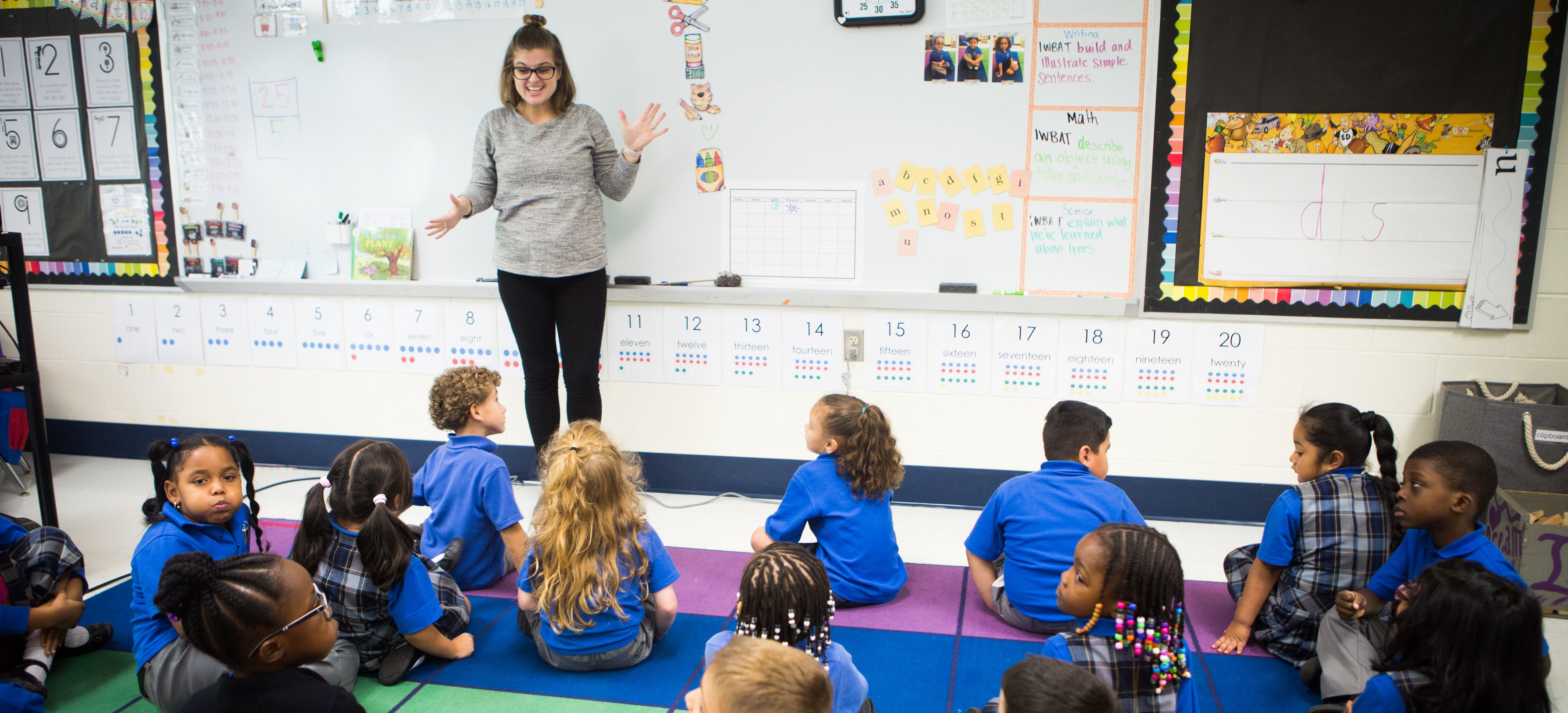
Culturally Responsive Curriculum
The network’s professional development addresses bias, stereotypes, and the history of structural racism in the United States, and its rubric to evaluate teachers, administrators, and support staff includes cultural competencies.22 Sarah Anderson, BVP’s chief academic officer, explains that while these issues are admittedly hard to measure, the presence of cultural competencies on its rubric allows the network to have conversations with staff about issues like race and class.
BVP is also focusing on these issues in the curriculum itself—and how teachers are interpreting it to make their teaching culturally responsive. Part of that comes from giving more voice to students, who now, for instance, lead their own parent–teacher conferences.
For the humanities, the curriculum includes books from diverse authors. Kindergarteners learn to celebrate differences with such titles as I Like Myself and Nappy Hair. First graders read Squanto’s Journey, which tells the story of the first Thanksgiving from a Native American perspective. Second graders read stories about Cinderella from around the world. The school also tries to be intentional about how students use their non-academic time by providing “prompts” to get kids talking and thinking about diversity. In the current charged political climate—where the day after the 2016 presidential election some students wore red “Make America Great Again” baseball caps while others expressed concerns about being deported—the school believes this work is critically important. One Cumberland mother, who is white, was proud that her son wanted to talk with her about what happens if ICE agents approach him and his friends after discussing the topic in school. Another Cumberland mother, whose son is multi-racial, described how he felt much more comfortable about his identity once he joined BVP because he felt more accepted by a diverse group of peers.
Ensuring a Staff Role in Fostering Diversity
The schools endeavors to have every family receive a home visit from a teacher by the end of October. They do this in the hopes of aiding teachers build relationships with families and helping them understand who their students are and where they are coming from.
“It’s easy to make assumptions about our communities. It’s really easy to say, ‘Lincoln: it’s rich white kids.’ But Lincoln has some poor pockets. ‘Pawtucket: it’s going to be poor urban kids.’ Pawtucket has some really [affluent] neighborhoods,” says Mike DeMatteo, BVP’s chief operating officer. “We don’t want to make stereotypes about the four communities, but actually get out and see them and understand that a ZIP code isn’t necessarily going to define them. You really need to know the kids and their story.”
The school’s leadership also spends time in the different communities. Chiappetta created a scavenger hunt for BVP’s senior staffers over the summer. He led them to community hotspots that mattered to kids, like playgrounds, basketball courts, libraries, and the Boys and Girls Clubs. He challenged them to find businesses owned by BVP families, as well as other staffers’ homes.
Chiappetta has also been intentional about where family events are located, for instance moving the school’s popular 5K race from northern Cumberland to a park in Pawtucket.
It is not an easy feat to hire a staff that reflects the diversity of its students, particularly in a state with a teaching force that is 95 percent white.
It is not an easy feat to hire a staff that reflects the diversity of its students, particularly in a state with a teaching force that is 95 percent white.23 The network has had some success hiring high-level staffers from its urban districts: one such educator is Osvaldo Jose Marti, head of one of the middle schools, who grew up in Pawtucket, and Stephanie Gonzalez, associate director of partnerships, who grew up in Central Falls. Gonzalez occupies an important outward-facing role for BVP, working on parent engagement and advocacy, as well as connecting students with the larger community beyond BVP through internships and “shadow days” with local professionals.
Growing Pains and Opportunities
As the network grows and matures, it is rethinking some of its original foundations, including its approaches to discipline, homework, and even how much autonomy it gives to its individual schools. It is trying to give its educators more of a role in shaping their school’s policies, and also trying to improve teacher retention.
Meanwhile, the network is continuing to find creative ways to ensure more equal participation among parents from different backgrounds, which is proving a tougher nut to crack than leaders expected.
Opposing Views on School’s Strict Structure
BVP launched with a “no excuses” model, which entails strict discipline, a longer school day, and heavy loads of homework. It’s now shifting some of its approaches, including recently reducing the amount of homework students get (particularly in elementary school) and cutting the day’s length by one hour. (At a little more than seven hours, the school day is still nearly 20 percent longer than the sending districts’ school days, Chiappetta noted.)
Wandy Henrriquez, a BVP senior who grew up in a public housing development in Pawtucket, credited the school’s long hours and the homework load with keeping him focused on college and off the streets.
“I used to leave my other school at 2:00, and then I’d be back at home. This school, I’m back home at 5:30, and they gave me a lot of homework, so I would not be done until 8:30,” he says. “And when I was a young kid, my mom didn’t let me go out after 8:00. So, it kept me away from my friends, who got into stuff like violence, selling drugs. If I was still in my other school, I’d probably be around them and be into stuff like that. I’m not going to lie.”
Ultimately, the network cut the hour off the day to retain staff, Chiappetta says, noting that as the network grows up so does its teaching force: last year, there were thirty-three maternity leaves out of 210 educators. Still, some staffers question whether the school’s performance could be adversely affected by shaving the day by an hour, which was spent mostly on professional development.
Teachers put in long hours at the schools, and are available by text until 9:00 p.m. Like many charter schools with a non-unionized teaching force, BVP’s staff skews younger. Roughly 33 percent of the network’s teachers have been teaching for three years or less, compared to the statewide average of about 10 percent of teachers with that small amount of experience.24
Transforming Approaches to Discipline
Many families are drawn to BVP for its strict discipline, but some school leaders feared the approach was not doing much to change behavior, that the same children were repeatedly landing in suspension. Boys of color were disproportionately affected, says middle school principal Marielle Emet, who, like other school leaders, is given a fair amount of autonomy by senior network administrators when it comes to many school policies. She moved toward a model of restorative justice this year, with classes holding “restorative circles” to bring children together to talk about behaviors. She believes that getting students to care about their community is key: they are then more open to thinking about how their behavior affects that community.
“Every time we have a bullying incident, we find out the bully is someone who doesn’t feel connected to community,” she says. “By putting them in suspension or detention, that’s not going to reconnect them. It’s disconnecting them further. That’s why we bring them into a circle instead and talk about the impact and how we can make it better.”
“Every time we have a bullying incident, we find out the bully is someone who doesn’t feel connected to community. By putting them in suspension or detention, that’s not going to reconnect them.”
To get buy-in, Emet enlisted teachers’ help, spending a week with them before the 2017–18 year to craft the new policy, and then convened a parent focus group to get feedback. It is still is a work in progress, she admitted, and the school is devoting most of its monthly professional development to refining the policy.
Second grade teacher DeRocha says that her elementary school is also focusing more on social–emotional development, spending the first twenty-five minutes of each morning explicitly teaching social skills and calming strategies like mindfulness, and encouraging kids to talk about their feelings of frustration and anger as well as appropriate ways for them to deal with those feelings.
Encouragingly, the school has seen a significant decrease in office referrals for egregious behavior, especially for some students who were challenging the previous year, she says.
Bridging the Parent Engagement Divide Remains a Challenge
While the network has created meaningful ways for its students to break down boundaries within the classroom setting, BVP still struggles with bridging the divide between groups of parents, and the voices of more affluent families often drown out others.
Stephanie Gonzalez, who leads family engagement, estimated that parent meetings tend to be comprised of 60 to 70 percent white mothers from Cumberland and Lincoln and 30 percent mothers of color. (The participants are overwhelmingly mothers, she added.)
“I took for granted, even as a woman of color who speaks Spanish, just how hard it is to engage a diverse group,” says Gonzalez, who also translates meeting materials and often serves as an interpreter. “I struggle that most of our meetings tend to be white moms from Cumberland—who mean so well and I’ve been able to build great relationships with them—but parents from Central Falls and Pawtucket, who don’t speak English very well, are deterred from those meetings for a lot of reasons.”
Each school has its own parent–teacher organization, called a family leadership council, which aims to have a leader from all four communities, and parent meetings are often held early in the morning or in the evening, with childcare and food provided. Still, some parents from Central Falls and Pawtucket have told her that they don’t feel welcome at the meetings and that they don’t understand a lot of what’s happening. Some Cumberland and Lincoln families edge out other voices when they decide to hold events where they want to charge $15 a person, Gonzales explains, and it sometimes is lost on them that such a fee is not feasible for all families.
“We’re still working on that,” she says, adding, “We’re very mindful of not creating additional barriers.”
Chiappetta says parent engagement in urban schools tended to be a problem in the past, and he anticipated it would remain a problem. In some ways, though, he says, the BVP model has exacerbated the issue with the more affluent families drowning out other parent voices.
Connecting parents tends to be a challenge regardless, he says. Chiappetta has urged schools to organize playdates and spaghetti dinners to bring families from different backgrounds together, an approach successfully employed by other charter schools. For example, Brooklyn’s Community Roots Charter School, another intentionally diverse school, organizes small groups of “Play and Learning Squads” for students and parents to have outings or do cooking and crafts at another family’s home, with the goal of mixing children who would not typically spend time together outside of school.25 Chiappetta has tried to use conversational prompts or starters at school concerts to get parents talking to each other. A recent family night at a YMCA in Lincoln proved successful, but he still struggles to find events that connect families in ways that spur them into setting up their own playdates.
Not being a neighborhood school also contributes to some of the difficulties, Chiappetta says, noting that families might pass five to ten other elementary schools closer to their home on their commute to BVP. “You are much more likely to have a community feel where you’re going to school with your neighbors,” Chiappetta says. “Whereas we have kids who are on the bus for an hour a day each way.”
A Growing Network
BVP’s newest elementary school and middle school have not yet scaled up to reach their full capacity, and the high school is going to graduate its first class at the end of 2018. As the network continues to grow, it continues to grapple with giving school leaders and teachers more autonomy while maintaining its core unifying vision.
The different schools also have slightly different student populations, which bring different challenges. For instance, 6 percent of students at one elementary school have disabilities; at another, it is 12 percent. The high school has the largest percentage of such students—nearly 14 percent; it also has the highest percentage of students eligible for free and reduced-price lunch, at about 72 percent.
As the network continues to grow, it continues to grapple with giving school leaders and teachers more autonomy while maintaining its core unifying vision.
The level of teaching experience at the schools might vary, too. At one elementary school, 20 percent of the teachers were in their first or second year; at one middle school, nearly 40 percent were.26 An inexperienced staff can cause challenges: at one elementary school, for instance, where there were two first-year fourth-grade teachers responsible for lesson-planning, the network noticed a dip in state math scores compared to Rhode Island averages. In response, BVP’s director of STEM is now spending more time in that school’s fourth grade teaching master lessons, observing and providing other supports. Other challenges related to a young teaching force have arisen as well: in June 2016, disparaging comments about students that three Teach for America corps members wrote to each other on a Slack chat were leaked on Twitter. They soon resigned, and the school quickly brought the community together to address the situation.27
There is a constant tug-of-war between the centralized approach and autonomy, says Mike DeMatteo, BVP’s chief operating officer. “I think it’s great that schools have more autonomy, but the further apart it gets, the harder it is to pull it back and say, ‘These are our core tenets.’”
Chiappetta says giving educators autonomy is critical to retention efforts. “If you want to be a great place to work, you have to give people voice in the work,” he says, noting that aligning the curriculum took a lot of autonomy away from teachers. “Now, we’re trying to figure out, how do we build more of that autonomy back for those who are skilled and masterful?”
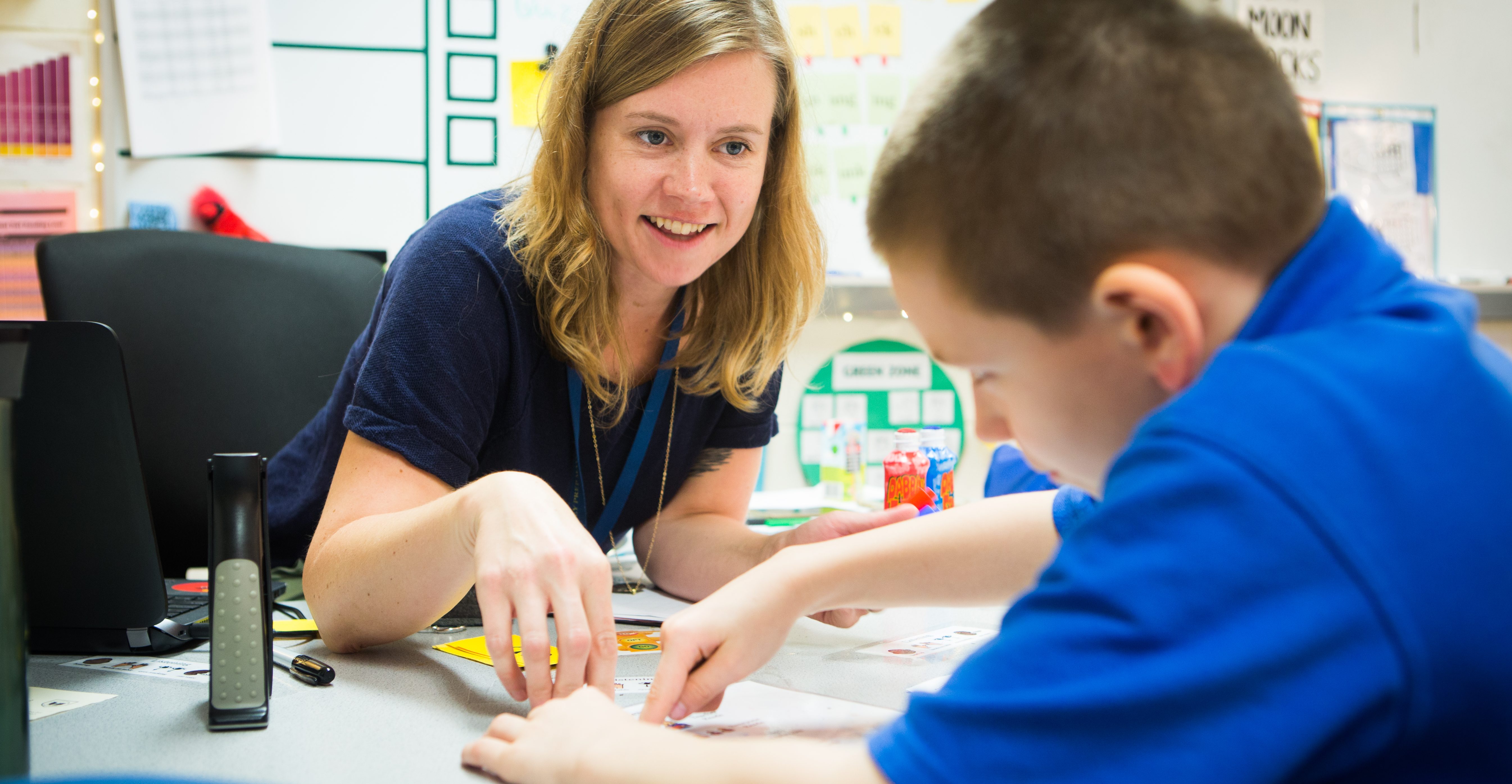
Conclusion
As an intentionally diverse network, Blackstone Valley Prep not only enrolls a racially and socioeconomically diverse student body by design, but also integrates students within the classroom. The results have been positive for the school’s low-income students, who outperform their peers in the four Rhode Island communities from which BVP draws. But the network’s demographics are increasingly skewing low-income, especially in the older grades, often, school leaders worry, due to racial bias among families. The demographic tilt to low-income is a trend that BVP leaders are concerned might continue, though network leaders are hopeful that its new state-of-the-art high school and the successes of its first graduating class will make it more attractive to affluent families.
To keep classes integrated, the network has large class sizes with two teachers each, allowing them to differentiate within the room. But there are challenges with the model, especially in having students with behavioral challenges in these large classrooms. The approach has turned off many suburban families, BVP leaders acknowledge. At the high school level, BVP is embracing tech and personalized learning, allowing students to tackle assignments at their own pace. This approach, too, has come under fire, and school officials do worry that it could alienate some students. But Rhode Island as a whole is moving in this direction, and BVP hopes it can provide lessons for the state.
In deepening its core mission as a diverse charter network, BVP has developed a culturally responsive curriculum and is fostering diversity among staff, but it is still working to meaningfully connect parents from diverse backgrounds. As the network grows, it has rethought some of its strictest policies: shortening the long day by an hour, reducing the homework load, and moving toward more restorative approaches to discipline. It is also trying to give schools more autonomy—and is hopeful that doing so will help with teacher retention—while remaining true to its unifying vision of itself as a high-performing, integrated charter network.
“We are in our ninth first year,” Chiappetta says, referring to the network’s determination to start every year afresh. “That’s both intentional in terms of reinventing ourselves regularly and challenging ourselves to get better.”
Notes
- Unless otherwise noted, all quotes are from interviews or observations by the author.
- “Our Results,” Blackstone Valley Prep website, accessed April, 2018, http://blackstonevalleyprep.org/results/.
- 2012–2016 American Community Survey 5-Year Estimates, https://factfinder.census.gov/faces/nav/jsf/pages/programs.xhtml?program=acs.
- “Central Falls Home Prices & Values,” Zillow, accessed April 26, 2018, https://www.zillow.com/central-falls-ri/home-values/.
- 2012–2016 American Community Survey 5-Year Estimates, https://factfinder.census.gov/faces/nav/jsf/pages/programs.xhtml?program=acs.
- Blackstone Valley Prep internal data, January, 2018.
- “About Blackstone Valley Prep,” Blackstone Valley Prep website, accessed April 26, 2018, https://blackstonevalleyprep.org/about/.
- Blackstone Valley Prep internal data, January, 2018.
- Marcia Green, “Local teen marijuana use among highest in nation,” Valley Breeze, August 12, 2015, http://www.valleybreeze.com/2015-08-12/cumberland-lincoln-area/local-teen-marijuana-use-among-highest-nation.
- Rhode Island Department of Education data for Blackstone Valley Prep for 2016–17, accessible through http://www.eride.ri.gov/reports/reports.asp.
- Dana Goldstein, “Integration and the ‘no excuses’ charter school movement,” Washington Post, June 2, 2011.
- Rhode Island Department of Education PARCC data for 2017, accessed April 26, 2018, https://iss.ride.ri.gov/AssessmentResults.
- “Race for Results: Building a Path to Opportunity for All Children,” The Annie E. Casey Foundation, October 24, 2017,
http://www.aecf.org/blog/new-report-shows-racial-barriers-prevent-children-of-color-and-immigrant-ch/. - Rhode Island Department of Education PARCC data for 2017, accessed April 26, 2018, https://iss.ride.ri.gov/AssessmentResults.
- Ibid.
- Ibid.
- Blackstone Valley Prep website, “Our Elementary Model,” https://blackstonevalleyprep.org/academics/elementary/.
- Richard D. Kahlenberg and Halley Potter, A Smarter Charter: Finding What Works for Charter Schools and Public Education (New York: Teachers College Press, 2014).
- Tim Newcomb, “Will Personalized Learning Become the New Normal?,” The Atlantic, March 29, 2017, https://www.theatlantic.com/education/archive/2017/03/will-personalized-learning-become-the-new-normal/521061/.
- Kate Stringer, “Richard Culatta on How to Do Personalized Learning Well—and Why It Could Be the Key to Narrowing a School’s Equity Gap,” The 74 Million.org, December 6, 2017, https://www.the74million.org/article/74-interview-richard-culatta-on-how-to-do-personalized-learning-well-and-why-it-could-be-the-key-to-narrowing-a-schools-equity-gap/.
- Benjamin Herold, “The Case(s) Against Personalized Learning,” Education Week, Nov. 7, 2017, https://www.edweek.org/ew/articles/2017/11/08/the-cases-against-personalized-learning.html.
- See attached appendix.
- Ulrich Boser, “Teacher Diversity Revisited: A new state-by-state analysis,” Center for American Progress, May, 2014, https://cdn.americanprogress.org/wp-content/uploads/2014/05/TeacherDiversity.pdf.
- Rhode Island Department of Education, Blackstone Valley Prep Elementary 2 School survey 2013–2014, http://infoworks.ride.ri.gov/files/surveyworks/2013-2014/combined/surveyworks-2013-2014-blackstone-valley-prep-elementary-2-school-student-parent-teacher-es.pdf.
- Richard D. Kahlenberg and Halley Potter, A Smarter Charter: Finding What Works for Charter Schools and Public Education (New York: Teachers College Press, 2014).
- “Teachers,” Niche.com page for Blackstone Valley Prep, accessed April 26, 2018, https://www.niche.com/k12/blackstone-valley-prep-lincoln-ri/#teachers.
- Nancy Krause, “3 Blackstone Valley Prep teachers resign after private chats leaked,” WPRI.com, June 22, 2016, http://www.wpri.com/news/local-news/blackstone-valley/blackstone-valley-prep-fires-3-teachers-after-private-chats-leaked/1044401690.
